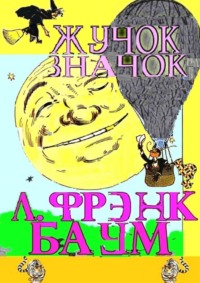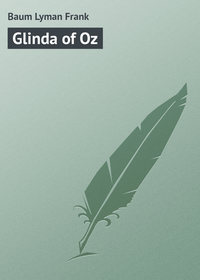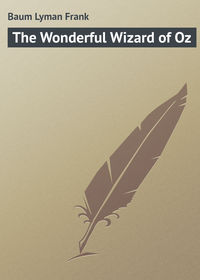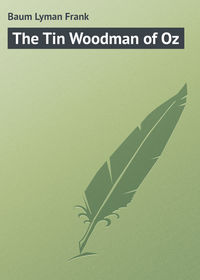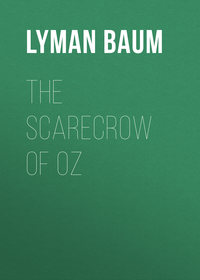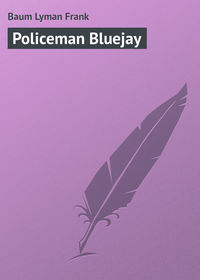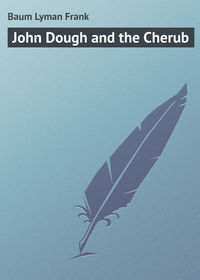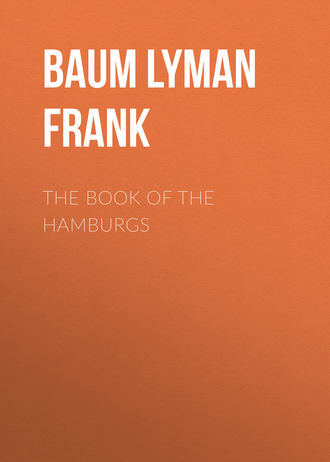 полная версия
полная версияThe Book of the Hamburgs
In breeding for pullets choose a dark-colored cockerel, with good ear-lobes, small comb and good symmetry, and simply mate him with the very best hens you can find. There is a tendency in hens of this variety to become a rather dull, light bay in ground color as they grow aged – these are the very hens to mate with the above-described cockerel. Care should be taken to procure the very best comb, ear-lobes, and symmetry you can find.
With these matings you can hardly fail to breed a good proportion of fine chicks; but, as we have said in connection with the Silver-Spangled Hamburgs, you may not find a cock at first that will prove a good breeder. If not, you must keep on trying. In both the varieties of Spangled Hamburgs the strain has a great deal to do in furnishing good breeders. “Blood will tell;” and we should call the attention of the breeder of both these varieties to the necessity of establishing a strain of his own as soon as possible, whose good qualities he will be able to know thoroughly, and whose bad ones he will promptly recognize and endeavor to counterbalance by proper matings.
SILVER-PENCILED HAMBURGS
We have already stated that the Penciled Hamburgs were imported into England from Holland, where they first attracted the attention of English fanciers, and although there can be no possible doubt in the mind of an intelligent observer that they originally possessed, with the Spangled and Black varieties, a common progenitor, still they possess several distinctly different characteristics. This is owing, no doubt, to their being so long bred and undoubtedly perfected in a different country and by a different class of people. These differences consist chiefly in a smaller and finer form than the Spangled and Blacks – a smaller head, a smarter appearance, and perhaps more activity, their motions being very quick and graceful. That they are great layers of a small but exquisitely white and finely-flavored egg is proverbial, and on their first introduction into England this quality procured for them the title of “Dutch everlasting layers.”
The Silver-Penciled Hamburg is a very beautiful bird, and is greatly admired by every one who can see any beauty at all in a finely-marked and gracefully formed fowl. Indeed, we believe that they have the most finished appearance of any fowl, their markings being so fine and regular that there seems nothing more to be desired to entitle them to the palm for beauty.
This variety, besides the name which we have given, were also called “Chittiprats,” and still later, “Bolton Grays,” under which name they were widely disseminated, and even yet we believe that in some sections they still retain this appellation, although all other names are very rapidly giving way to that of Silver-Penciled Hamburgs. “Creole” was a name also applied to a variety of Silver-Penciled Hamburgs, the markings of the feathers of which were very similar to those of the standard Silver-Penciled Hamburgs (see cut). The “Bolton Grays” were simply Silver-Penciled Hamburgs “run to seed,” the pencilings being mossy or smutty.
They are a numerous and attractive class at our poultry exhibitions, and are gaining ground yearly in popular favor; we have even known instances where breeders of Silver-Spangled Hamburgs have discarded them in favor of the Penciled varieties, although we think that the former, in their way, are fully as beautiful and desirable.
Silver-Penciled Hamburgs, as chicks, are quite tender, but when fully feathered they are as little liable to disease as any fowl we know of. They are great foragers, and will almost keep themselves, with good range, being happy and contented anywhere and shelling out quantities of eggs under most adverse circumstances.
Plumage.– In the male bird the plumage of the head, hackle, back, saddle, breast and thighs, should be a clear, silvery-white. The yellowish tinge so often seen upon these feathers is a very grave fault, and one that will not be tolerated by a good judge. There is often a tendency to penciled or smutty markings on the under-color of the back – that is, it can only be seen by raising the top feathers. This is also a serious defect, and should be avoided. The tail proper is black, the sickles and tail-coverts being a rich green-black, with a fine and distinct edging of white.
This is the most difficult point to obtain in the plumage of the entire bird in any degree of perfection – indeed, a perfectly-marked tail is seldom seen in a cock. Some birds have marbled tails; others have the sickles splashed with white, which is equally objectionable, as the only white which should be in the tail is the clear edging. The wing appears almost white when closed; but the inner webs of the wing-coverts should be darkly penciled. A fine black edging should be observed on the wing-coverts, caused by the ends of the outer webs being also slightly tipped with black, which gives the appearance of a slight and indistinct bar on the wing. This point should be distinctly observable, but not too coarse or heavy. The color of the secondary quills is also important. They should be white on the outer web, except a narrow strip of black next the quill, only seen when the wing is opened out, the wing appearing white when closed. The inner web is black, except a narrow white or gray edging. The fluff should be slightly penciled or gray. In the hen the neck-hackle should be pure white, entirely free from any marking whatever. The remainder of the plumage should be a clear, silvery-white, each feather distinctly penciled or marked across with bars of black, as clear and distinct as possible and in particular as straight across the feather as possible. The finer this penciling and the more numerous the bars, the better. This penciling should extend from the throat to the very tip of the tail. A well-penciled tail is very desirable, and quite difficult to obtain, as there is a special tendency in the long feathers to lose the straightness across of the markings. Tails penciled squarely across to the very tip can be and are bred, but they are never common. One of the greatest faults to which the plumage is liable is the irregular and “horse-shoe” style of markings which we so often see in the breast, and, in fact, nearly every part of the hen’s plumage. This is a most serious defect, and not less to be noticed because of its frequency. A very usual fault is a light breast, or not only light, but covered only with these horse-shoe markings. The birds best marked on the breast are frequently liable to be spotted on the hackle, and this latter fault is certainly much to be preferred to a bad breast. However, the best marking on the breast is never quite equal to that on other parts of the body.
A very desirable point is to have the rows of penciling on one feather fall onto the rows on the next, giving the bird a ruled or lined appearance. A coarsely penciled bird is not to be thought of in these days – although such birds were formerly the rule – as they have a spotty or speckled appearance, which is not the correct thing at all. A finely-penciled wing in hens is almost impossible to find, many of our best show birds being very bad in this respect, the markings being very light and indistinct.
The penciling is much better the first year – or in pullets; with age it becomes cloudy, mossy, or indistinct, so that a well-penciled hen is quite rare. When they do moult out well the second or third season, they are especially valuable, and should be retained for breeding as long as they will breed. All tendency to brownish or chestnut colored feathers (which sometimes make their appearance, although rarely,) should be carefully guarded against, and when they do appear the bird should at once be discarded for breeding purposes.
We have enumerated the faults to which this breed is liable so minutely, not because they are greater than those of many other varieties, but because they require the most skillful breeding to eradicate. As they are among the most beautiful fowls we have, so are they among the most difficult to breed to perfection, and they offer a fine field to intelligent breeders, who like to feel that they owe the perfection of their birds to their own efforts. Those men who want their birds made for them, so that they will breed easily themselves, had better let them alone, for they should only belong to the intelligent and hard-working fancier, who will find them very pliable, and who can reap the reward of his industry and perseverance in beholding in time a fowl that in beauty and utility shall stand unrivaled throughout the world.
Other Points.– The comb in Silver-Penciled Hamburgs is the same as that described in Black Hamburgs, and averages as perfect as in any other variety. It is usually rather smaller, with more “work” or fine points on the top than the comb of the Spangled varieties. The ear-lobe should be pure white, and is usually very good in this respect, it seeming to be one of their firmly-fixed characteristics. The face has the same tendency to white as in the other varieties, and this should be avoided with like caution. In symmetry they are, perhaps, superior to the Spangled varieties, and are equaled only by the Blacks in this respect, birds poor in symmetry being pleasingly scarce. They are not quite so full in the breast as the other varieties we have described, but have an exceedingly graceful carriage, and are upright and sprightly in appearance. Their legs are small, slender, and neat in appearance, and in color, leaden-blue, which should be very dark – approaching black – in young birds.
Points in Breeding Silver-Penciled Hamburgs.– One good point in regard to this variety is that the same birds will breed fine birds of both sexes, if the stock is chosen with judgment. Some breeders use two sets, but we do not consider that they are required, and much prefer to breed from one yard. Of course, as we have said before, there will be, as in all varieties, some strains or families that produce better birds of one sex than the other; still, in this case there should be no great disparity in the quality of the male and female birds. However, as it is possible to breed very good show cockerels from hens with no quality of penciling at all, it is very necessary, in making up a yard for breeding, that the strain of the cock bird should be known to be a well-penciled one. The hens will speak for themselves. It is very satisfactory to remark that our most popular judges favor those cock birds that possess the points most likely to produce good pullets; and if such a bird comes of a strain known to produce good pullets, of a penciling similar in character to those of the hens he is to be put with, it is sufficient. His tail should be black throughout, the sickles black except the clear white edging; the wing-bars should be perceptible, but slight, though the wing-coverts which form it must be darkly penciled on their upper webs. If there be too little color here the pullets will lack color also; if the bar be too dark, the penciling will most likely be coarse, heavy and spotty. As such birds as we have described above are by no means common, and may not be readily procured by the average breeder, we shall also give matings for breeding from two yards, which will be necessary if this is the case; although, be it distinctly understood, the above mating is our choice, and really the only proper one.
For Cockerels.– Mate the best show cockerel you can find with hens much too light in the penciling to be fit for showing – tolerably marked, but markings not heavy enough – and if they are irregular, it is no great matter.
For Pullets.– Mate a very dark cock with the very best hens or pullets you can procure. It will make little difference if the cock’s sickles are entirely black, and his body spotted in places; if he is only dark, he will throw a fair lot of pullets if the hens be good.
The disadvantage of breeding from these two pens is obvious, as neither strain thus produced can be relied upon to breed in any other way, and many of the pullets hatched, even if they do not show the approach to black spangling already referred to, are apt to have the broad and coarse markings which we are trying to breed out as rapidly as possible.
A cock from the first mating described, if well marked, will throw very fine pullets, while he will reproduce his own likeness in the cockerels.
GOLDEN-PENCILED HAMBURGS
In point of markings, the Golden are fully as beautiful as the Silver-Penciled Hamburgs, while the golden ground-color, which is their distinguishing feature, while not so popular with the majority of breeders as the silver, may yet be preferred by some. In point of productiveness they equal the Silvers, laying a small, white and finely-flavored egg. The young chicks of both varieties of Penciled Hamburgs are rather delicate; they should not be hatched before April. Another reason in favor of late hatching is that if hatched too early they moult out like old hens at the time they should be laying, and so lose that sharp and rich penciling that is so desirable in pullets.
Plumage.– One of the most important points in the plumage of this variety is the evenness of the ground-color, which should be a rich golden-color throughout. Some birds, otherwise good, are very faulty in this respect, the ends of the feathers being a lighter gold than the other parts. These birds, as the season advances, are apt to get still more faded and washed-out in appearance; and, indeed, most birds fade in color from the effects of the sun.
Some hens of a good rich color retain this much better than others, which is a great point in their favor.
In cocks the same fault is common, appearing in the shape of a lighter shade on the ends or tips of the feathers, on the breast and underneath the body; avoid this as far as possible – the more uniform the color, the better.
The penciling should be exactly the same as in the preceding variety, as distinct, and yet as fine as possible, and the more bars across the feather the better – always providing they are straight across, and clearly defined. The neck-hackle, as in the Silvers, should be clear. The cock is of a darker tint, being almost chestnut in color; he must not, however, be too red or too pale, but very rich in color. The proper tail-feathers are black, the sickles and tail-coverts, or “hangers,” a rich black, edged with brown or bronze, very narrow, and clearly defined. The American Standard of Excellence gives the required width of this edging as about one-sixteenth of an inch.
Clear black sickles are a great fault, and so is a tail bronzed all over, or with scarcely any black in it, being bronzed all over the sickles. This last kind of a tail is very showy, and used to be a favorite with judges who did not understand Hamburgs, but birds possessing this defect have been proved to produce very poorly penciled pullets.
Other Points.– The comb, ear-lobe, legs and symmetry in the Golden-Penciled Hamburgs should be exactly the same as those described in the Silver-Penciled. In symmetry, especially, they are fully their equal.
The points in breeding are exactly similar to those explained in connection with the preceding variety, and need not be repeated, the best rule being to breed from the very best birds you can find on both sides, care being taken to obtain a rich, even ground-color in all cases.
WHITE HAMBURGS
While we undoubtedly owe the White Hamburg to skillful English breeding, it is a variety bred much more generally in America than it is across the water, where it is regarded as a mere sub-variety of Hamburgs. The variety was originally bred in England as an experiment, and was obtained by selecting the lightest Silver-Spangled Hamburgs, both male and female, and mating them together, each year selecting the lightest progeny, until the pure white bird was procured. Thus it will be seen that in spite of all arguments to the contrary, the White Hamburg is really a pure Hamburg in every particular. While they were a very pretty variety, they were looked upon with considerable disfavor by the English, who discouraged their breeding, and regarded them as an innovation in the Hamburg family.
It is many years now since they began to be bred in America, and they are much thought of for their many good characteristics, while they figure quite prominently at our principal exhibitions. What has served principally to discourage White Hamburg breeders, is the fact that so many imitations have been made and thrust upon the public under that name, that were really mere mongrels. The only true White Hamburgs are those which come from Silver-Spangled or Silver-Penciled Hamburgs, in the manner we have described. Those with White Leghorn or White Dorking crosses are impositions, and should be avoided by the fancier, who will readily know them by their clumsy symmetry, large size and coarse combs.
Characteristics of the Variety.– The White Hamburgs should be pure white in plumage throughout, with no signs of that undesirable yellowish tinge so often seen on otherwise good birds. They should be true Hamburg in symmetry, avoiding the Leghorn or Dorking build, and they should be (and are) no larger than the other varieties. Size is not a point to be regarded in Hamburgs; it is their laying qualities we look to, and this variety, while not quite up to the others in this respect, is very productive. The comb in White Hamburgs should resemble that described under the heading of Black Hamburgs. They should have a small, round, white ear-lobe, by no means pendent, and bright red face; carriage upright, sprightly and graceful.
The Leg Controversy.– We have so far said nothing concerning the color of legs in White Hamburgs, for the reason that there has been a spirited controversy for many years among breeders as to whether they should be blue or white. It has been a great nuisance to the American Poultry Association, who have found themselves persuaded, because of specious arguments on both sides, to change their Standard at least four times on legs of White Hamburgs. It was originally decided by the Standard committee that a white leg was proper. It was afterward changed from white to blue, from blue back to white, then again to blue, and in 1879 to white.
Hon. Lewis F. Allen, who is perhaps our largest and most prominent breeder of the White Hamburg, and who has done as much as any other man to push the breed, says in a clever letter, which, however, betrays his chagrin at the vacillating decrees of the Standard committee:
“I have been so disgusted with the doings of the Standard committee on the points of fowls that I have determined never again to take any part in its discussions, or show a bird in its exhibitions, although I still keep and breed the White Hamburg with white legs and beak, which marks truly belong to them, as they did when I first knew them, in 1870.
“I obtained my original birds from a gentleman who bought them in New York – descendants from imported stock, I was informed. They were then, and still are, true Hamburgs in style and form, non-sitters, and nearly constant layers; hardy in temperament, and, in short, very satisfactory birds. They were successfully shown in several of our poultry shows in Buffalo, and won prizes, the white legs and beaks being entirely satisfactory to judges and the society.
“But when the American Poultry Association undertook to make a Standard of points for the various varieties of fowls, some of the pretended ‘professionals’ introduced various innovations, and among them accorded the blue leg and beak to the White Hamburg, which was adopted. Consequently, at the next show at Buffalo, my birds were ruled out under the new blue-leg regulation. The Standard committee had a full meeting during the show, and I went before them and showed the absurdity of the new rule, and the committee decided to reverse the late action and return the points of white legs to the White Hamburgs. It has since, however, been changed several times.”
Mr. Allen seems to have no doubt but that the white leg is entirely proper, and he shows himself to feel injured by the constant changes made in the Standard; and indeed it has greatly injured the variety, simply because breeders never could tell how to breed their birds so that they would not be disqualified at the next season’s shows. That the point between the two colors is a fine one is proved by the indecision of the Standard committee.
Through all the changes the Rev. C. W. Bolton has stood as firmly by the blue legs as Mr. Allen has by the white ones, and his faith in their propriety has never wavered. Mr. Bolton is one of our most prominent Hamburg men, and has proved his skill as a breeder in showing some excellent stock of the several varieties. He writes us:
“I know perfectly well that my White Hamburgs are pure Hamburgs in every respect. I have bred them myself from the Silver-Penciled Hamburgs, with blue legs, and all the characteristics of their predecessors. For ten years I have never had a chick with legs of any other color than blue, which shows that the blue leg is a firmly fixed characteristic, and properly belongs there.”
Why should other varieties of Hamburgs have a blue leg and the White Hamburg a white leg? The blue leg is a distinct Hamburg characteristic.
We believe that when our final and unalterable Standard is made, the White Hamburgs will be credited with blue legs.
Points in Breeding.– The rule in mating White Hamburgs should be simply to procure the birds which possess the finest combs, ear-lobes and face, pure white plumage and blue legs. Guard against heavy, blocky forms and coarse combs, and pay less attention to size than to proper symmetry.
CARE OF YOUNG CHICKS
As so few breeders seem to have any clearly-defined ideas as to the proper mode of caring for newly-hatched or growing chicks, and beginners are not only wholly at sea in this respect, but have no place to which they may turn and acquire the information that they have not yet been able to gain through experience (which is by odds the best teacher, as we are seldom able to profit by the experience of others), we have thought best to prepare a few distinct and common-sense instructions, which we have endeavored to render as full and explicit as possible, without being so tedious or complicated as to mislead in any way the novice.
To start with, there is one essential point in raising these delicate little creatures —care. Give them plenty of care, and they will thrive —proper care, we mean. There are three primary things to be guarded against in caring for very young chickens:
• 1. Chilling.
• 2. Vermin.
• 3. Indigestible food.
For the first week, perhaps, nearly every old hen is faithful to her little brood, and guards them with that maternal tenderness for which she has been made the symbol of motherly love. But this care soon wearies her, and in a few days she begins to neglect them, marching around in the chill and drenching rains of spring, and dragging her little brood after her through the damp grass, entirely oblivious of their sufferings; and one by one they drop off and are left behind, chilled through, or seized with cramp. Only the most persevering are able to keep up, until, perhaps seized with a pang of remorse, she spreads her wings and allows the little ones to find a temporary shelter beneath her warm feathers. Even the strongest often succumb to rheumatism and die after this dangerous exposure. This picture is not overdrawn; it is of common occurrence. A proper coop, therefore, for the hen and chicks, as soon as they are able to leave the nest is, and always will be, regarded as a necessity.
Vermin is the second evil to be guarded against. Examine the chicks carefully when first hatched, and should you find any lice on either them or the hen, let your first move be to rid them of these pests, which will else surely prove fatal to the young birds. Procure some Dalmatian or Persian Insect Powder, and dust them thoroughly with it until their tormentors are exterminated. And here let us recommend cleanliness in everything. The tender chicks cannot live in filth, which breeds disease more rapidly than anything else. Keep your coops clean, your houses clean, and your runs clean. It is a very important element of success – indispensable, in fact.




